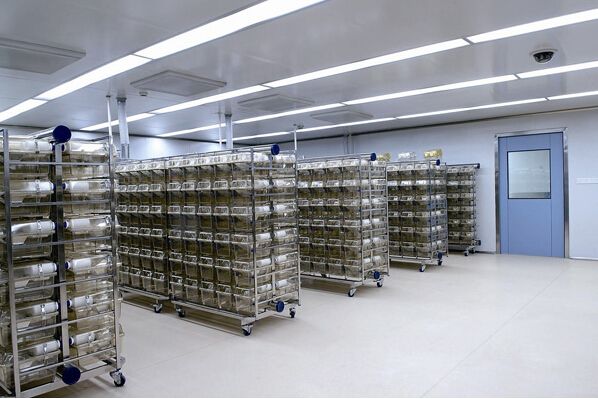Construction Scheme of Animal Laboratory
Detailed introduction:
Animal laboratory includes general animal laboratory planning design and clean animal laboratory planning design, generally composed of the front area, feeding area, animal laboratory, auxiliary area.
1. Layout design of animal laboratory: Provide professional suggestions for customers, design product layout planning that meets the laboratory standards and use requirements, and determine the category, specifications and quantities of products in the laboratory.
2. Design of reserved position for hydropower: After determining the plane layout, provide a comprehensive hydropower location map to facilitate accurate construction of customer projects.
3. Design of ventilation and exhaust system: Participate in the new or renovation project of the laboratory in the planning stage, send professional engineers to the site to contact the relevant personnel, and design a complete ventilation scheme according to the number of ventilation carriers in the laboratory (such as ventilation cabinet, collecting hood, exhaust hood); The scheme includes: pre-ventilation in the building. The location and size of the exhaust duct well, the distribution and specification of the duct. Ensure that the air speed, exhaust air volume, noise and other indicators used in the carrier of ventilation meet the national standards, and do not intertwine with the air conditioning, fire protection, lighting and other lines in the building.
4. Design of gas pipeline system: According to the requirement of experiment for gas supply and site layout, the design scheme of gas supply system is provided, which can precisely control the pressure and flow of gas while ensuring the purity of gas.
5. Design of environmental protection: Provide a perfect solution for waste gas purification and treatment, so that the waste gas generated in the experiment can be effectively solved, in line with the environmental emission indicators.
6. Product personality design: According to the experimental process and the special requirements of personnel, adjust the product structure and function, design personalized products to meet the needs of different users.
7. Design of safety facilities: According to international standards, safety cabinets, drug cabinets, emergency eluents, emergency eyewashes and other safety facilities should be rationally allocated in the laboratory.
Level of Animal Laboratory:
Class I common animal (CV) refers to a general animal whose microorganisms are not under special control. It is required to exclude zoonotic pathogens and pathogens of a small number of severe infectious diseases in laboratory animals. In order to prevent infectious diseases, certain measures should be taken to ensure the reproducibility of the test results (i.e. almost the same results can be obtained in the experiments of the same strain of animals in accordance with the prescribed experimental procedures, regardless of the different operators, at different times and with the same strain of animals).
Secondary clean animals (CL) require the elimination of pathogens of zoonoses and major animal infectious diseases.
There is no special pathogen animal (SPF) in the third level, so it is required to exclude some specified pathogens from the second level. The methods of sterilization and sterilization include high efficiency air filter sterilization, ultraviolet sterilization, three ethylene glycol steam spray and lithium chloride solution spray.
Grade IV aseptic animals (GF) or omnivorous animals (GN). Aseptic animals are not required to carry any microorganisms that can be detected by existing methods. Whole animals require the implantation of one or more known microorganisms into sterile animals.
In pathological examination, four kinds of experimental animals also have different pathological examination standards.
The primary appearance is healthy, and the main organs should not have lesions.
There were no secondary microbial pathogens detected by microscopy except for the primary index.
No special pathogens were found in the third class. There were no secondary or tertiary microbial pathogens.
Level 4 does not contain secondary or tertiary microbial pathogens. Spleen and lymph nodes are histological structures of aseptic animals.
There are different requirements for the design and management of laboratory animals at different levels.
Sterile, known bacteria and animals without special pathogens need to be raised in sterile or sterile environment as far as possible. This environment is commonly called barrier environment in the world. That is to say, animals are separated from the polluted environment by a barrier, just as fetal rats are in the uterus of female rats. From the point of view of controlling microorganisms, the environment can be divided into five categories: isolation system, barrier system, semi-barrier system, open system and laminar shelf system.
Shandong Aide Purification Engineering Co., Ltd. is a professional manufacturer of laboratory planning and design, engaged in laboratory decoration, laboratory design, laboratory renovation and other business for many years. The company has a professional laboratory design team, covering the laboratory decoration and construction team. Animal Laboratory Construction Animal Laboratory Design Animal Laboratory Decoration Animal Laboratory Planning, Find Ed Purification. To learn more about the medical purification industry, please pay attention to the Wechat Public No. Aide-188 (Ed Purification and Oxygen Supply)





